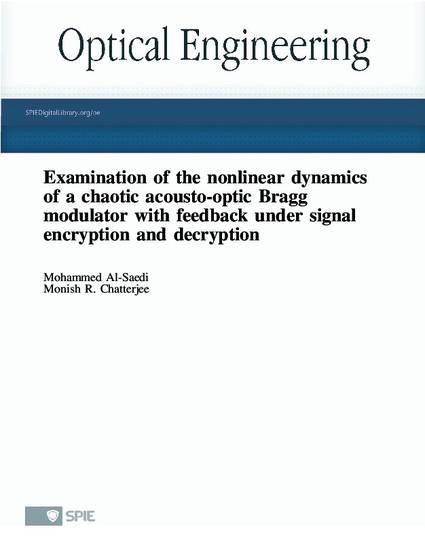
An acousto-optic Bragg cell with first-order feedback, which exhibits chaotic behavior past the threshold for bistability, was recently examined for possible chaotic encryption and recovery of simple messages (such as low-amplitude periodic signals) applied via the bias input of the sound cell driver. We carry out a thorough examination of the nonlinear dynamics of the Bragg cell under intensity feedback for (i) dc variations of the feedback gain (β˜) and the phase shift parameter (α^ 0) and (ii) ac variations of α^ 0; total under signal encryption, investigating both from two different perspectives: (i) examining chaos in view of the so-called Lyapunov exponent derived recently by Ghosh and Verma and (ii) examining chaos in terms of the familiar bifurcation maps of intensity plotted against the feedback gain and the effective bias.
It is shown that overall, the nonlinear dynamical results using the two approaches broadly agree, both for dc (fixed-parameter) analyses and, more importantly, when applied to the case of ac signal encryption cases. This affirms the effectiveness of the nonlinear dynamical theory in predicting and tracking the actual physical behavior of this system for message signal transmission and recovery under complex chaotic encryption.
Available at: http://works.bepress.com/monish_chatterjee/40/

This document is provided for download in compliance with the publisher's policy on self-archiving. Permission documentation is on file.
DOI: http://dx.doi.org/10.1117/1.OE.51.1.018003